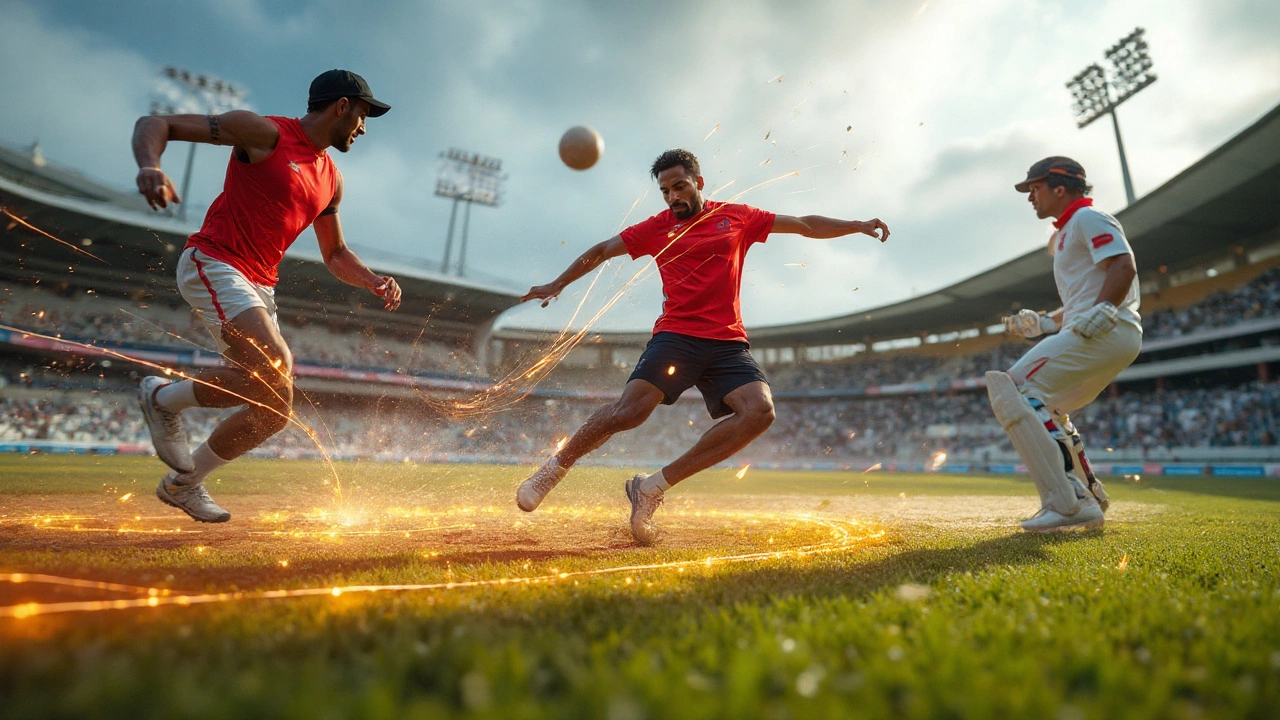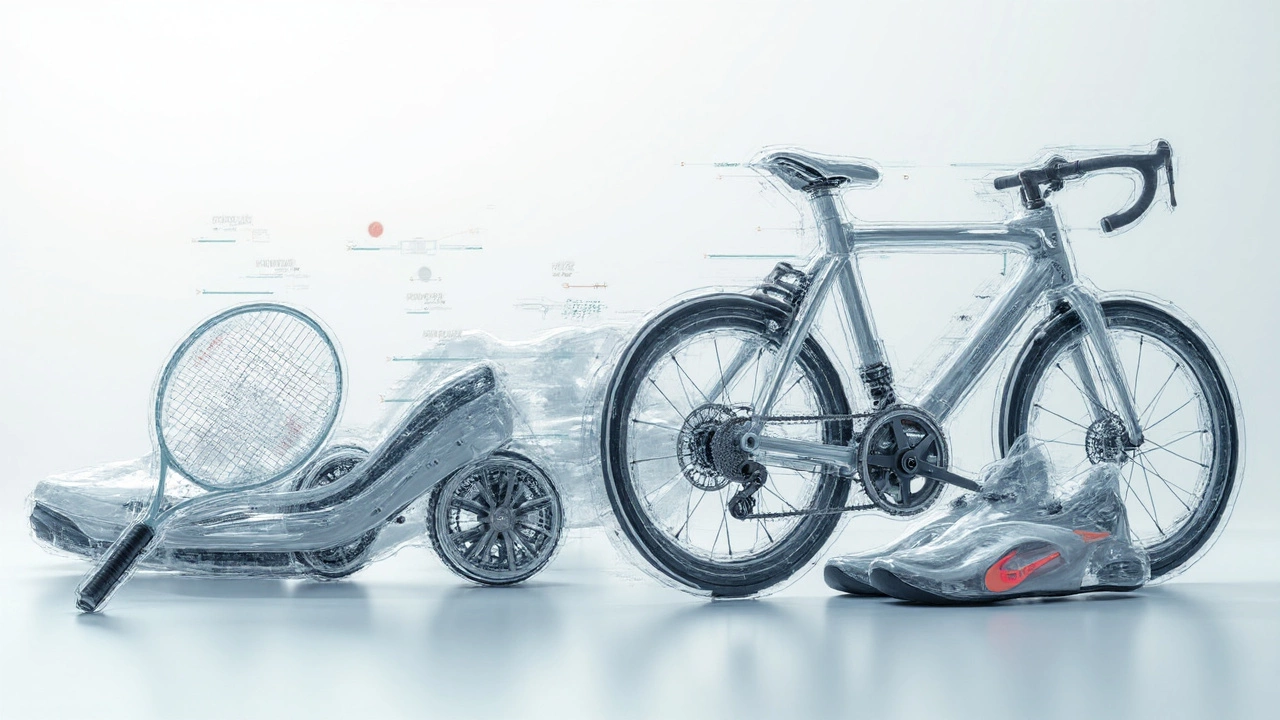Sports Equipment in Physical Science: Understanding How Gear Impacts Performance

Ever wondered why a baseball bat sends a ball soaring, while a badminton racket launches a shuttlecock with such a different spin? Here’s where physical science kicks in—it’s the quiet backbone of every bounce, swing, and serve. Far from dusty textbooks, physical science actually gets right down on the field and into athletes’ hands. It’s at the heart of what makes sports gear tick, and can make or break an athlete’s performance. Let’s flip over the common story of sports equipment and see how the gears run beneath the surface—physics, materials, and engineering all rolled into one.
Defining Sports Equipment in Physical Science
Sports equipment might look simple—think balls, bats, shoes—but in the context of physical science, each piece is a bundle of fascinating principles. At its core, sports equipment refers to any object, gear, or apparatus designed for use in a particular sport, but when you zoom in, things get technical. Every bit of it, from the dimples on a golf ball to the flex of a hockey stick, is built to make the most out of physics laws. Physical science dives into how matter and energy interact, so naturally, anything you swing, throw, or wear during sports has been crafted to take advantage of those laws.
Look at the humble tennis racket. Its strings must balance flexibility and tension to bounce a ball with both power and accuracy. The choice of string material—nylon, polyester, or even natural gut—actually tweaks the energy transfer. That’s elastic potential energy in action. In running, shoes aren’t simply about style or branding; they’re engineered to cushion impacts, store then return energy, and sometimes even give you a small speed edge. Many studies—including those from the American College of Sports Medicine—have shown a noticeable boost in running efficiency with certain foam soles.
Material science is a big star in this field. When manufacturers swap out wood for graphite, carbon fiber, or alloy, it’s not for looks—it’s the result of intense research into which materials maximize strength, reduce weight, and control vibration. Ever see those slow-motion videos of a golf club head bending when it hits a ball? That’s the transfer of kinetic energy, and why titanium clubs took over in the early 2000s. They’re light yet tough, which helps players swing faster, hit farther, and do so with less fatigue. Physical science also covers things you wouldn’t expect, like the patterns on a soccer ball. A traditional 32-panel ball curves through the air because of the way air flows over the seams. Modern designs tweak this for better accuracy and aerodynamic stability—something confirmed in wind tunnel tests at leading sports labs.
So, sports equipment in physical science isn’t just about having the right stuff. It’s all about maximizing the laws of physics for speed, control, safety, and fun. Every single item—from the grippy resin on basketballs to the layered construction of protective helmets—has been influenced by experiments, measurements, and field testing, all with one goal: to turn physical science into wins.
The Physics Behind Popular Sports Equipment
The next time you catch a game, look past the scoreboard. What’s really at play is a dance of energy, force, motion, and sometimes friction. Let’s break down a few fan favorites using physical science’s toolbox.
Start with basketballs. They bounce because of the pressure difference inside and outside the ball, which is a classic case of air pressure and Newton’s Third Law. Ever notice how a flat ball refuses to come back to your hand? That’s physics in action! The surface texture of the ball, covered with little pebbles, boosts grip and controls how it spins—critical for dribbling and shooting. That tactile feel isn’t accidental; engineers test for it by running thousands of micro-adjustments during manufacturing.
Soccer balls get their signature curve from aerodynamic principles. The Magnus effect comes in big here: when a player kicks with a spin, the airflow differences create lift on one side, curving the ball’s path. During the 2010 FIFA World Cup, the Jabulani ball caused uproar because its smooth surface led to unpredictable movement—more proof of how tiny changes in design cause massive changes in play. Good soccer balls today have textured surfaces and panel patterns tweaked via wind tunnel testing to balance control and precision.
In baseball, the classic cork-and-rubber center has become a battleground between tradition and advantage. MLB rules dictate ball weight and bounce, but small changes can mean more home runs or pitchers’ delight. Even the stitches affect airflow—tight stitches make for a faster, straighter ball, while raised seams specialize in curveballs and sliders. Studies at MIT have shown that the seam height can change trajectory by several inches—often the difference between a strikeout and a home run.
You might not give much thought to swimsuits, but physical science is deep in the pool. Those techy-looking racing suits worn by Olympic swimmers don’t just look slick—they’re designed to minimize drag with special fabrics that mimic shark skin. Remember the 2008 Olympics, when a wave of world records fell? Swimmers wore polyurethane suits that reduced water resistance by about 10%. The competitive advantage was so drastic that FINA, the world swimming body, decided to ban them.
Golf balls, too, have been the target of scientific tinkering. Take a close look at the dimples—they’re not just for show. Dimples reduce drag and let the ball travel nearly twice as far as a smooth one. Studies from Titleist’s golf laboratories confirm that dimple shape, pattern, and depth can alter lift and drag, changing a golfer’s range by 30 yards or more. It’s the difference between a birdie and the rough, all hidden in plain sight.
| Sport | Key Equipment | Main Scientific Principle |
|---|---|---|
| Basketball | Ball, Shoes | Air Pressure, Grip, Bounce |
| Baseball | Bat, Ball, Glove | Elasticity, Aerodynamics, Momentum |
| Swimming | Suit, Goggles, Cap | Hydrodynamics, Drag Reduction |
| Golf | Clubs, Balls | Material Science, Lift, Drag |
| Soccer | Ball, Cleats, Shin Guards | Magnus Effect, Friction, Stability |
Sneakers are even trickier. Running shoes today factor in biomechanics, cushioning, and even force plate data to design soles that provide maximum energy return. Companies like Nike and Adidas run tests with elite runners to measure stride, impact force, and muscle fatigue so they can tweak materials and design for a performance boost. It’s not just about style—every little detail is tuned to squeeze out extra efficiency, cushioning joints while springing the runner forward.

Engineering the Perfect Sports Gear: Materials Matter
Behind every stunning play is a silent partnership between athlete and gear. The real heroes in this matchup? Materials science and engineering. Modern gear owes its leap forward to breakthroughs in polymers, metals, and composites, each carefully chosen to fit the needs of a specific sport.
First up: compositional wizardry. Carbon fiber gets a lot of attention, and for good reason. It’s light, yet mind-blowingly strong, and it flexes just enough to amplify a tennis serve or dampen a bicycle frame’s vibration. That’s why top tennis rackets, bike frames, and even hockey sticks ditched wood for these high-tech fibers. You’ll also find thermoplastics, Kevlar (used for bulletproof vests!), and even aerospace aluminum showing up on pitches and courts. These materials give durability, reduce weight, and often boost safety.
Take helmets. Early versions in football and cycling were made from leather and offered minimal protection. Today’s models integrate layers of polycarbonate, foam, and impact-absorbing gels. Engineers at Virginia Tech run crash tests to calculate how well these helmets manage g-forces—because when it comes to concussions, every joule absorbed matters. Even the crumple zones are inspired by car engineering, channeling forces away from athletes’ heads.
The type of material can also define the style of play or the rules. In baseball, bats made of ash or maple provide different sweet spots and feedback on vibration. Metal bats, popular in amateur leagues, transfer more energy and let the ball travel farther, but they’re banned in pros to keep the game balanced. The International Baseball Federation keeps a close eye on these shifts, since a shift in material can cause ripples through the sport’s entire strategy.
Even simple items like uniforms aren’t immune. Top-level kits are made from moisture-wicking fabrics that pull sweat away while allowing skin to breathe. Nike’s Dri-FIT and Under Armour’s HeatGear were both game changers—if you’ve ever run a summer 5K in cotton versus synthetic tech fabric, you know the difference in comfort and speed. Soccer goalies get gloves with latex padding layers to cushion and grip. Beach volleyballs swapped leather for water-resistant composites after too many soggy games. It’s a constant race to use new materials for a tiny performance bump.
Not everything comes out perfect the first time. Sometimes, innovations flop—like those “curve” hockey sticks in the 1960s, banned because they gave unfair spin and control. The lesson? Physical science unlocks possibilities, but good engineering has to fit within fair play and practicality. The world’s best gear is born where scientific breakthroughs meet athlete feedback and rigorous field testing. The goal is always finding that sweet spot between speed, power, control, and, most importantly, safety.
Cutting-Edge Technology and Smart Sports Equipment
Tech in sports used to mean chalk scoring and maybe a tape measure. Now, smart equipment is everywhere, blending sensors, electronics, and artificial intelligence for jaw-dropping performance analysis. Physical science hasn’t just revamped the basics—it’s gone digital.
Wearables are leading the charge. Modern sports equipment from major brands—think Adidas’ miCoach or Garmin’s running watches—sync with your phone and crunch data on speed, heart rate, stride length, force, and even technique drills. For instance, NBA athletes use smart insoles to measure which part of the foot makes contact and how much force is absorbed. Wear a smart baseball glove, and you’ll receive feedback on catching mechanics via haptic buzzes.
Balls have gotten smart, too. Adidas released the miCoach Smart Ball, which has sensors built in to track speed, spin, and trajectory. That info gets sent straight to your smartphone, so you can see how your free kicks compare to the pros. Wilson’s X Connected basketball logs the number and intensity of your shots automatically. All those insights help coaches and players fine-tune technique faster than any coach screaming from the sidelines.
Virtual reality is making waves in training. Instead of repetitive drills, athletes can wear a VR headset and simulate high-pressure scenarios: imagine a quarterback facing a digital defense, or a goalie on a penalty shootout. This kind of “mental reps” training is changing how teams prep for games and how players recover from injury. The German national soccer team used VR to simulate penalty shootouts before winning the 2014 World Cup, giving them an edge when nerves ran high.
The science behind this technology is robust. Sensors use accelerometers, gyroscopes, and magnetometers to record intricate details of movement, feeding a sea of numbers into coaching apps. Artificial intelligence sifts through this data to find trends that humans might miss, like subtle changes in motion that warn of fatigue or injury risk. The equipment talks to the athletes—figuratively and literally—helping them push boundaries while staying safe.
Some smart wearables even borrow tech from completely unrelated industries. For example, “haptic feedback” comes from gaming and phone vibrations—now, it guides rowers to perfect their rhythm or tells a boxer when they’re leaving their guard open. Biomechanics labs have gone mobile, and a weekend runner can collect data once fit only for Olympic facilities. If that’s not a physical science win, nothing is.
Of course, privacy and fairness remain hot topics. Digital doping—using tech to gain unfair advantage—is popping up, leading sports bodies to occasionally step in. But at its core, all these innovations come from the same urge that built the first wooden golf club: find a smarter, more scientific way to win.

Choosing and Caring for Sports Equipment: Practical Tips Rooted in Science
Let’s be real—nobody wants a shoe blowout mid-race or a deflated ball in the middle of a pick-up game. Physical science isn’t just about epic records; it’s the key to making your gear last, keeping you safe, and even helping you play better. Whether you’re shopping for new equipment or hoping to keep your favorite gear in prime shape, a little science goes a long way.
First, fit and comfort matter. Don’t get swayed by looks alone. When trying on shoes, pay attention to heel stability, arch support, and toe room. The foam and gel technology in most running shoes is designed to absorb and return energy, reducing joint stress. But this cushioning wears out—most experts recommend replacing running shoes every 500-800 kilometers (about 350-500 miles), depending on your stride and body weight.
Grip and texture are bigger deals than you might think. For bats, rackets, or hockey sticks, check the handle’s texture and material. Too slippery? You’ll lose power and control no matter how strong you are. Sports brands use elaborate lab tests (including sweat simulations and wear-and-tear machines) to get this just right. The same goes for balls: a well-gripped basketball or soccer ball helps with accuracy and dribble. If yours has lost its texture, it’s probably time for a fresh replacement.
Proper inflation changes the game. For basketballs, soccer balls, and volleyballs, always keep a small pressure gauge handy. Most balls are marked with their recommended PSI (pounds per square inch). If you play below this, the ball’s bounce or flight will be all wrong and you risk damaging the seams. Too much air, and you’ll lose grip and possibly pop the ball mid-game. That sweet spot is the result of careful material science and physics testing.
If you’re buying helmets or pads, look for certifications from official bodies like NOCSAE (National Operating Committee on Standards for Athletic Equipment). These standards aren’t just red tape—they mean that the gear has passed strict impact and durability tests, proven to protect you from specific types of injuries. It’s science and data, not just clever marketing.
Caring for your gear extends its life and keeps you safe. Always clean shoes after muddy games and let them air dry—avoiding direct heat, which breaks down foam padding and synthetic materials. Balls should be stored in cool, dry spaces, as extreme temperatures can warp the shape and affect the rubber’s elasticity. For electronics, keep batteries charged and avoid getting smart sensors wet (unless they’re specifically water-resistant).
- Check moving parts (like bicycle chains or skate wheel bearings) regularly for smooth operation.
- Replace worn-out grips on bats, rackets, and clubs to ensure consistent control.
- Wash uniforms and padding with gentle soap and skip bleach, which can break down high-tech fabrics and foams.
- For multi-layer equipment, follow the manufacturer’s specific care instructions.
If something splits, stretches, or otherwise fails, don’t patch it and hope for the best. The safety factor is no joke—a helmet or pad is only effective if it’s kept in the best possible shape. Performance-wise, top athletes regularly rotate through fresh gear to maintain that sweet ‘new equipment’ reliability. That might be overkill for a weekend warrior, but keeping gear clean and well-maintained definitely pays off by preventing slips, injuries, and complaints from teammates who hate when someone brings a half-deflated ball.
Physical science, cleverly baked into even the simplest piece of gear, can make your next game safer, smoother, and way more fun—even if you’re not breaking Olympic records. Picking the right stuff, keeping it tuned up, and knowing the science behind it? That’s a win before you even step onto the court.
